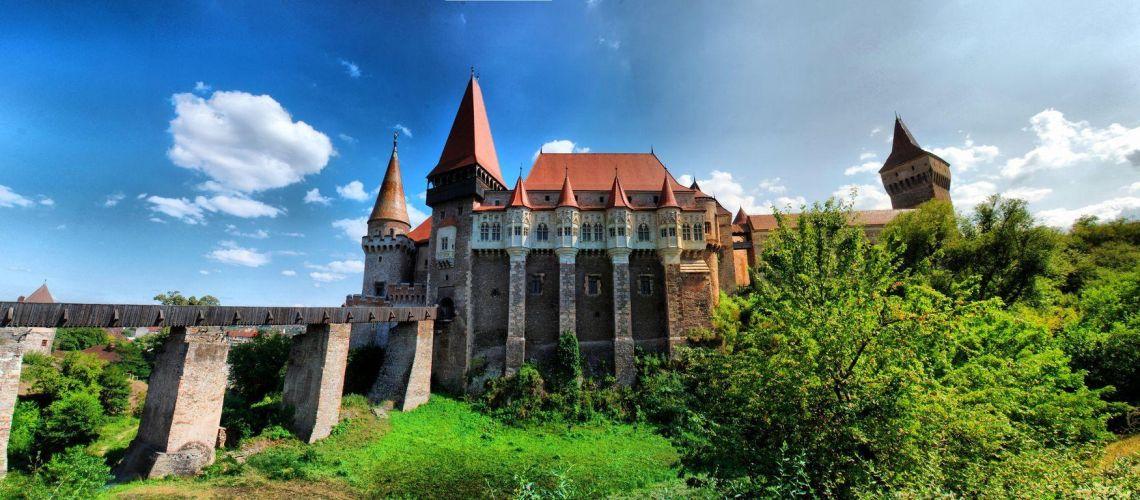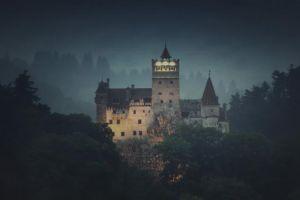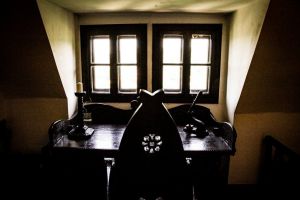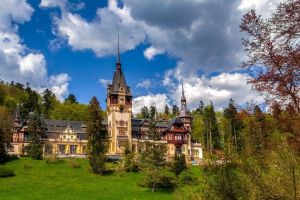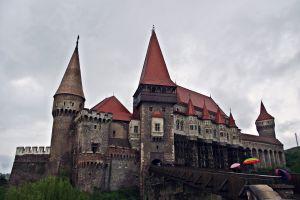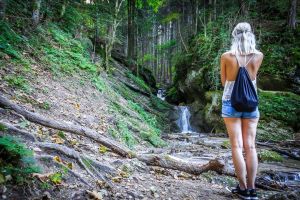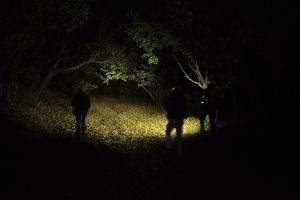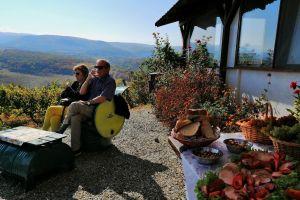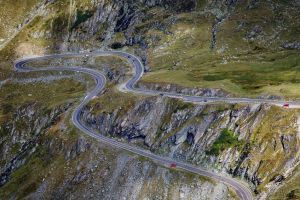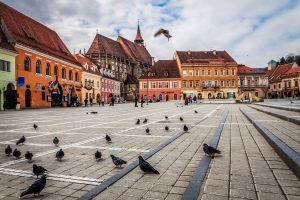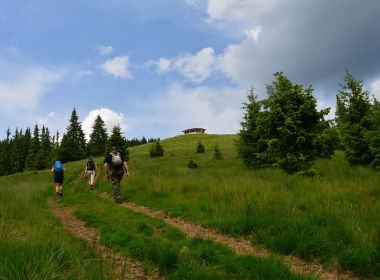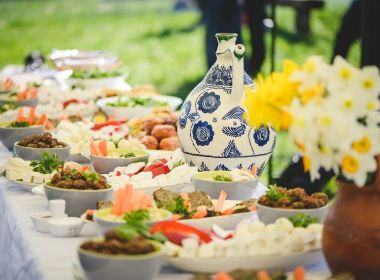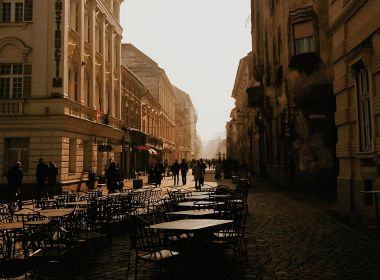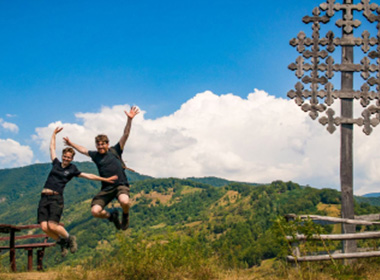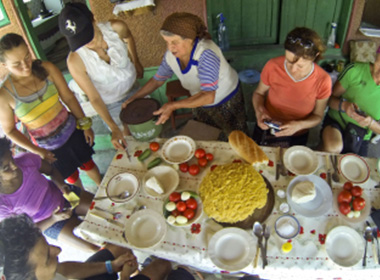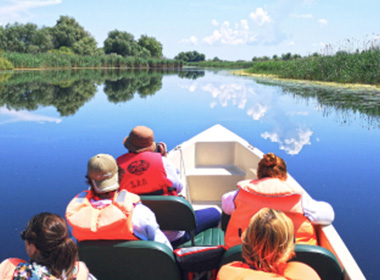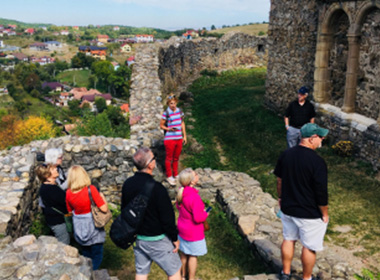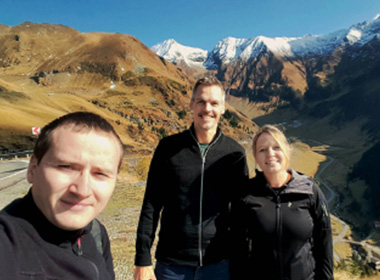Did you know there are 145 castles and fortresses in Romania? They tell our country's tumultuous, fragmented medieval history always under the threat of Ottoman expansion.
But not all of them can be visited, are in good condition or are easily accessible. That's why we made a list of the 15 most beautiful Romanian castles and fortresses to put on your 'must-see' list when planning to visit Romania for the first time.
The most famous Romanian castles are Bran (Dracula) Castle, Peles Castle and Corvin Castle which are popular tourist attractions in Romania. But you'll be surprised that other castles, while not as popular, are equally interesting and worth visiting!
That's why we've selected the best medieval castles and fortresses that have fascinating stories and legends to tell or are located in impressive settings in the Romanian mountains.
Most of these castles are included in our day trips starting from different Romanian tourist cities while others can be seen only on custom, private tours. Either way - we're here to help you visit our country so don't hesitate to contact us if you need any help!
So, now, let's get into our list of the most famous castles in Romania.
Table of contents
- 1. Bran Castle aka Dracula Castle
- 2. The former home of the Romanian royal family: Peles Castle
- Pelișor Castle, the small brother of Peles Castle
- 3. Corvin Castle: a place of real legends
- 4. Cantacuzino Castle, of the richest Romanian family
- 5. Travel back in time: Sighisoara Citadel
- 6 Banffy Castle: electrified ruins back to life
- 7. Wine tasting at Bethlen Castle
- 8. The impressive Sturdza Palace
- 9. The Palace of Culture in Iasi
- 10. The former Royal Palace in Bucharest
- 11. Iulia Hasdeu Castle - Museum of Spiritism
- 12. Poenari Castle, the real home of Vlad Dracula
- 13. The largest fortified church in Romania: Biertan Church
- 14. The citadel on the hill: Rasnov Citadel
- 15. The impressive Fagaras Fortress
1. Bran Castle aka Dracula Castle
The first castle on our list is also the most popular in Romania - so let’s get it out of the way!
Built in the 13th century by the Teutonic knights, Bran Castle is one of the most famous castles in Romania. Despite its rich history, spanning over seven centuries, the castle was actually made famous by Bram Stoker and his own spin on the legend of Dracula.
The English author had heard stories about the Romanian ruler of Wallachia Vlad Dracula also known as Vlad Tepes. He lived in the 15th century and was known to be ruthless with his enemies, criminals and traitors. While Bram Stoker never set foot in Romania or saw pictures of Bran Castle, he used this material as inspiration for his famous Dracula novel.
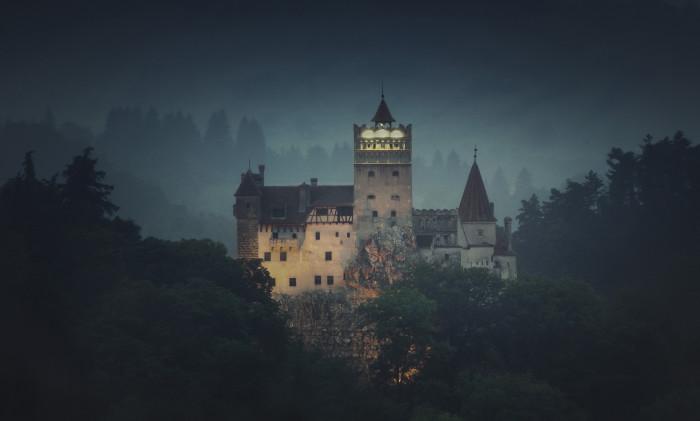
But the 1992 Hollywood movie that mentions Dracula’s Castle in Transylvania and shows something that looks like Bran Castle turned the castle into Romania’s #1 tourist attraction with around 1 million visitors every year.
Local tip:Because of its popularity and the fact that it’s a medieval castle with narrow corridors, small rooms and stairs, the castle tends to get very crowded and sometimes has a limit on the number of visitors allowed inside; so we strongly recommend you avoid planning your visit during weekends and buy your ticket online from their official website
Tourists visiting Dracula’s castle often uncover unexpected history: Romanians see Vlad Tepes as a hero defending the land from Ottoman expansion, and Bran Castle is celebrated as the summer residence of the Romanian royal family in the 20th century.
The castle was built originally by Saxons at a strategic trade crossroads between Transylvania and Wallachia, the castle boasts breathtaking views of the Rucar-Bran pass. In the 1930s, Queen Marie transformed it into a royal retreat, adding unique features like a 14th-century well converted into an elevator connecting the castle to the gardens below, now a fascinating tourist attraction.
Visitors can explore Romanian horror folklore through video projections, ensuring Dracula enthusiasts still find a touch of mythic allure. The maze-like interior and captivating mix of Gothic and medieval architecture make it a must-visit for anyone passionate about history and design.
Visiting Bran Castle (in the village of Bran) is one of the most popular things to do in Brasov or on a day trip from Sibiu or Bucharest. The only way to get there is by car and there are some buses from Brasov that will take you there. A standard ticket costs 14 euros.
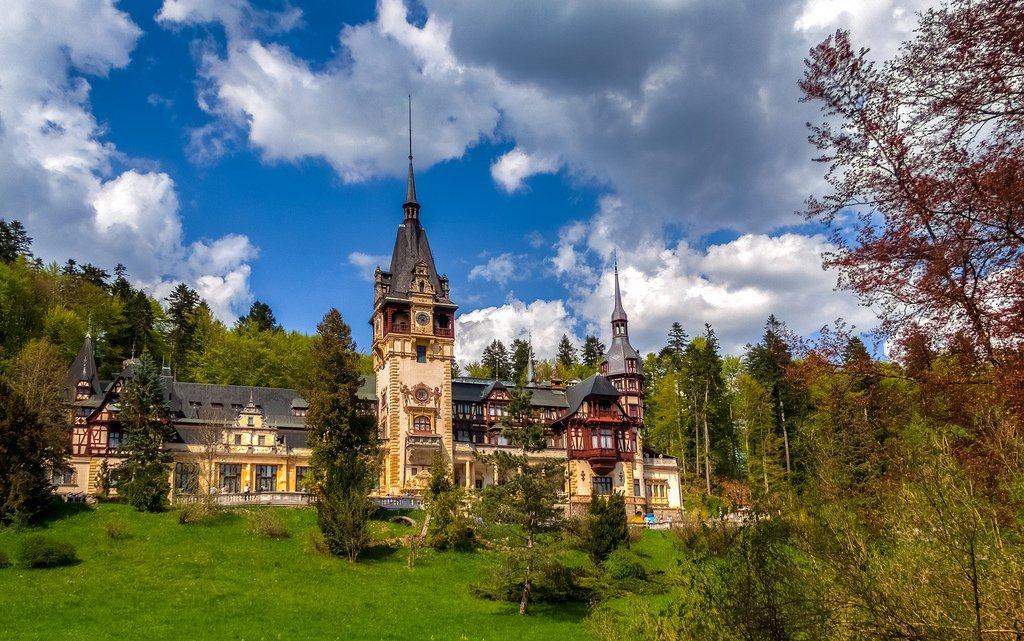
2. The former home of the Romanian royal family: Peles Castle
If you were to choose one of the most stunning castles in Romania, Peles Castle would undoubtedly top the list. Just look at it!
Located in the heart of the Carpathian Mountains, in the luxurious, old-school mountain resort of Sinaia at the base of the impressive Bucegi Mountains where the Romanian Sphinx is located, you can get here by car or train from Bucharest or Brasov.
Peleș Castle, built in the late 19th century by King Carol I, took over 40 years to complete and is considered one of Europe's most beautiful castles. Its neo-Renaissance style and stunning mountain setting make it a fairy tale destination.
Innovative for its time, it was the first European castle fully lit by electricity, powered by its own water plant. It also featured central heating, hidden vacuum systems, and retractable stained-glass panels for stargazing.
A guided tour reveals fascinating details, like Murano crystal chandeliers in some of its 160 rooms and a secret passage behind a bookcase. It's a must-see highlight of any trip to Romania.
The wonderful thing about Peles Castle is that you see the authentic life of royals and the effort they put into building modern Romanian society. Why? Because when the Romanian communist regime came to power in 1947 and King Michael was forced into exile, Peles Castle was closed to the public and ‘frozen in time’.
It was only after the fall of the communist regime that people discovered everything is almost in its original state - that’s why we think this is one of the best castles you should visit when you travel to Romania!
Once you’re done visiting, step outside, savor the fresh mountain air and admire the beautiful sculptures in the garden and artesian wells. This is how the noble families lived!
Pelișor Castle, the small brother of Peles Castle
If you’re visiting Sinaia, don’t miss Pelisor Castle, located near Peles Castle. Built by King Carol for his nephew, Ferdinand I, and Queen Mary, Pelisor was designed as an intimate royal residence, unlike the formal Peles.
Completed in the late 19th century, Pelisor showcases Art Nouveau with Celtic and Byzantine influences. Despite King Michael's wishes, it’s now open to the public.
Stories about Queen Marie, a beloved royal, linger here, visitors even claim to catch hints of her favorite violet perfume. With 99 rooms, highlights include the King’s study and the Golden Room, inspired by Queen Marie’s Scottish roots.
Check the opening hours for both castles on the official website as they differ depending on the season. Tickets start from 6 euros and go up depending on how much you want to visit.
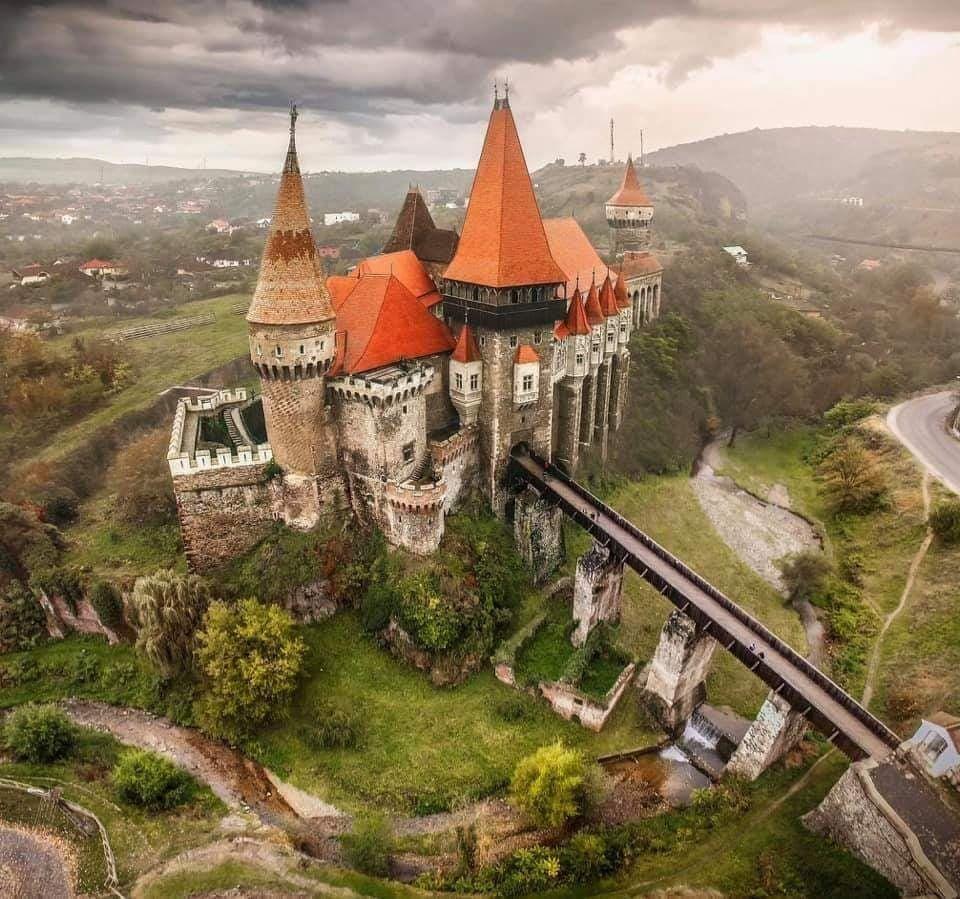
3. Corvin Castle: a place of real legends
Romania’s history is marked by threats from the Ottoman Empire, and Corvin Castle, also known as Hunyadi Castle or Hunedoara Castle, played a key role. Built in the 15th century by John Hunyadi, a military general and de facto ruler of Transylvania, it rose from the ruins of a 14th-century fortress.
With its moat, high walls, and strategic elevation, Hunyadi expanded the castle into a military garrison and symbol of the Corvin family’s power. It’s also where the future King of Hungary, Matthias Corvinus, was born.
The castle’s darker history includes its use as a prison, where Turkish captives were held or fed to wild animals. Visitors first encounter these chambers, including a torture room, parents with children may wish to skip them.
Don’t miss the Capistrano Tower, Diet Hall, and the infamous well, where Turkish prisoners left a chilling message after being betrayed. Ask your guide about the Knights’ Hall trapdoor to the Dungeon of the Forgotten or the Corvin family seal: a raven with a golden ring. This castle, among Europe’s largest, is full of stories to send shivers down your spine.
Local insight:With so many stories and legends, we think Corvin Castle is one of the best Romanian castles with an authentic medieval feeling to it, even compared to Bran Castle
But on the outside - Corvin Castle is simply spectacular. It's also the largest Gothic-Renaissance construction in Europe. But its location in the small town of Hunedoara, Central-Western Romania makes it difficult to visit other than by car or on a guided tour from Sibiu, Timisoara or Cluj-Napoca. Tickets cost 9 euros.
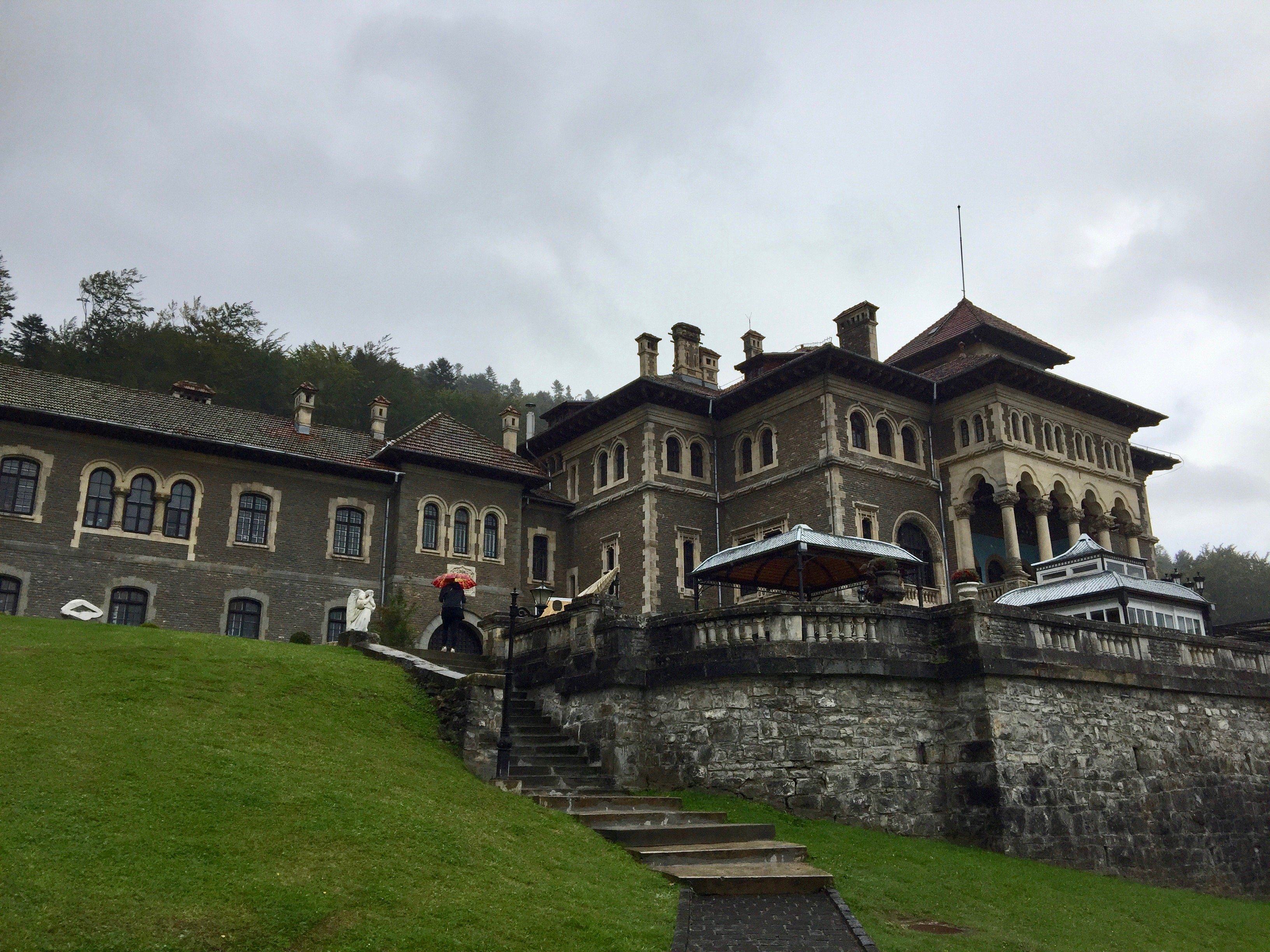
4. Cantacuzino Castle, of the richest Romanian family
Cantacuzino Castle shot to fame as a filming location for Netflix’s hit show Wednesday, directed by Tim Burton. Known for his love of dark, atmospheric settings, Burton chose this castle, sparking a wave of fans eager to visit the real-life inspiration behind the show.
Located in Busteni, very close to Sinaia in a similarly spectacular natural setting, Cantacuzino Castle was built at the request of Prince Gheorghe Grigore Cantacuzino roughly around the same time as the Peles Castle.
The Cantacuzino family, a prominent Romanian dynasty, built Cantacuzino Castle as a stunning neo-Romanian masterpiece. Prince Cantacuzino, the richest man in Romania at the time, spared no expense. Sadly, much of its original grandeur was lost when the communist regime seized power in 1947, stripping it of its aristocratic elements.
Since 2010, the heirs have restored the castle, recovering frescoes and decorations. Open to the public since 2014, highlights include the oak staircase supported only by walls, Ablesti fireplaces adorned with mosaics and gold, Carrara marble stairs, and Murano stained glass. The Ball Room, with 27 Cantacuzino family coats of arms, adds to its romantic charm.
Spread over 3,000 square meters, the grounds feature artesian wells, a grotto, and a terrace with breathtaking views of the Bucegi Mountains and Caraiman Cross. Visitors can enjoy these views from the castle’s restaurant, making it a perfect blend of history and beauty.
5. Travel back in time: Sighisoara Citadel
Once you pass the walls of Sighisoara Citadel you’ll feel like you’ve traveled back in time! This medieval fortress is among the last fortresses in the world where people still live.
It has been a UNESCO World Heritage site since 1999 and is a popular location for those who want to visit Transylvania and learn more about its history. This is also where Vlad Dracula was born and his house is now a restaurant and a tourist attraction in the citadel.
Sighisoara Citadel, built in the 12th century and upgraded over time, once had 14 towers, each maintained by a guild. Today, 9 remain, with the Clock Tower, built in the 14th century, standing as the citadel’s iconic landmark. This impressive defensive structure protected the main gate and now houses a clock mechanism still in operation, complete with figurines rich in stories shared by guides.
The tower’s ground floor once served as the Council Hall and is now open to visitors for a small fee. Sighisoara makes a perfect day trip, with a surprise for fans of Vlad Tepes: he was born in 1431 in the house with the Dragon Coat of Arms.
6 Banffy Castle: electrified ruins back to life
Banffy Castle, in Bontida, 40 km from Cluj-Napoca, dates back to the 15th century and was owned by the Banffy family, a wealthy Hungarian family who governed Transylvania in the 18th century.
Fortified in the 17th century, the castle blends Renaissance, Neoclassical, Neogothic, and Baroque architecture, making it a key example of Transylvanian architecture. This is why it was also known as Transylvania's Versailles Castle.
In the 18th century, a famous Viennese architect left a mark on the castle by adding a charming tranquil park with alleys, artesian wells, and a baroque flair. The entrance was adorned with splendid stone statues, giving the castle an elegant and timeless appeal.
Like many aristocratic estates, it has tales of intrigue, forbidden love, and murder. During World War II, the castle served as a German military hospital, where many soldiers lost their lives.
This made Banffy Castle develop a reputation among locals as being haunted similar to the famous Hoia Baciu forest also near Cluj which is by far the most haunted place in Romania!
Like many symbols of liberal and capitalist values, the Banffy Castle was abandoned under communist rule and fell into ruin. After the regime’s fall, the original owners' descendants reclaimed it, beginning a slow and meticulous restoration process in 1999. Now, it is placed on the World Monuments Watch.
In 2013 a small group of people had the idea to organise a festival on the castle’s estate and call it Electric Castle.
The festival has grown each year, now spanning nearly 5 days, attracting 200,000 people and 150 artists across 7 stages. Held in mid-July, it lights up the estate and integrates the castle ruins into its events, with part of the revenue supporting restoration efforts.
This is one of the most popular music festivals in Romania and in Eastern Europe - and is one of our favorites!
We even wrote a guide about Electric Castle for people going the first time.
7. Wine tasting at Bethlen Castle
Bethlen Castle, now a symbol of Jidvei wines, was transformed by one of Romania’s largest wine producers into a luxurious destination. Guests can stay overnight, enjoy Romanian delicacies, and experience wine tastings in its historic setting.
Also known as Bethlen Haller Castle or Jidvei Castle, it was originally built in the 16th century and redesigned between 1615 and 1624 by Count Stefan Bethlen, inspired by France’s Chambord Castle. Eugen Haller later refurbished it in the 18th century, adding a park, a fence, and an impressive gate.
Under communist rule, this beautiful castle was nationalized and used as a kindergarten, prison, dining hall, and butchery. Despite this, many original Loire Valley-inspired elements remain, offering a unique experience.
Jidvei Castle is located in central Romania, and it’s an easy day trip from Cluj-Napoca or Sibiu, but wine-tasting events require advance booking due to frequent events.
8. The impressive Sturdza Palace
Sturdza Castle, a magnificent building with Neo-Gothic architecture from the late 19th century, is located in Miclăușeni near Iași in Eastern Romania. Once home to the influential Sturdza family, it played a significant role in Romanian history.
The estate, originally owned by a 16th-century noble governor, was transformed by Dimitrie Sturdza, who added a Baroque church with precious artifacts. His son enhanced the property with an English-style park and a collection of rare books and manuscripts.
Visiting Sturdza Castle reveals the stark contrasts between the lives of Romanian peasants and the nobility, offering a captivating glimpse into the country’s past.
9. The Palace of Culture in Iasi
A visit to the Iași Palace of Culture offers a deep dive into Moldavian culture and tradition. This stunning Neo-Gothic building, completed in the early 20th century, is a masterpiece with elegantly decorated rooms.
Spanning 7,730 square meters, the palace once housed the Justice Court and administrative offices for Iași and the Moldavia region before the 1859 union with Wallachia. Even at its inception, it stood out for its innovative technical features imported from Germany, making it a landmark of both beauty and progress.
You can visit the Hall of Honor, the clock tower, the Henry Coanda room, and Voyvod’s Hall, all in excellent condition. The Palace is home to many Romanian museums, like the Ethnographic Museum of Moldova, the Art Museum of Moldova, the History Museum of Moldova and The Science Museum.
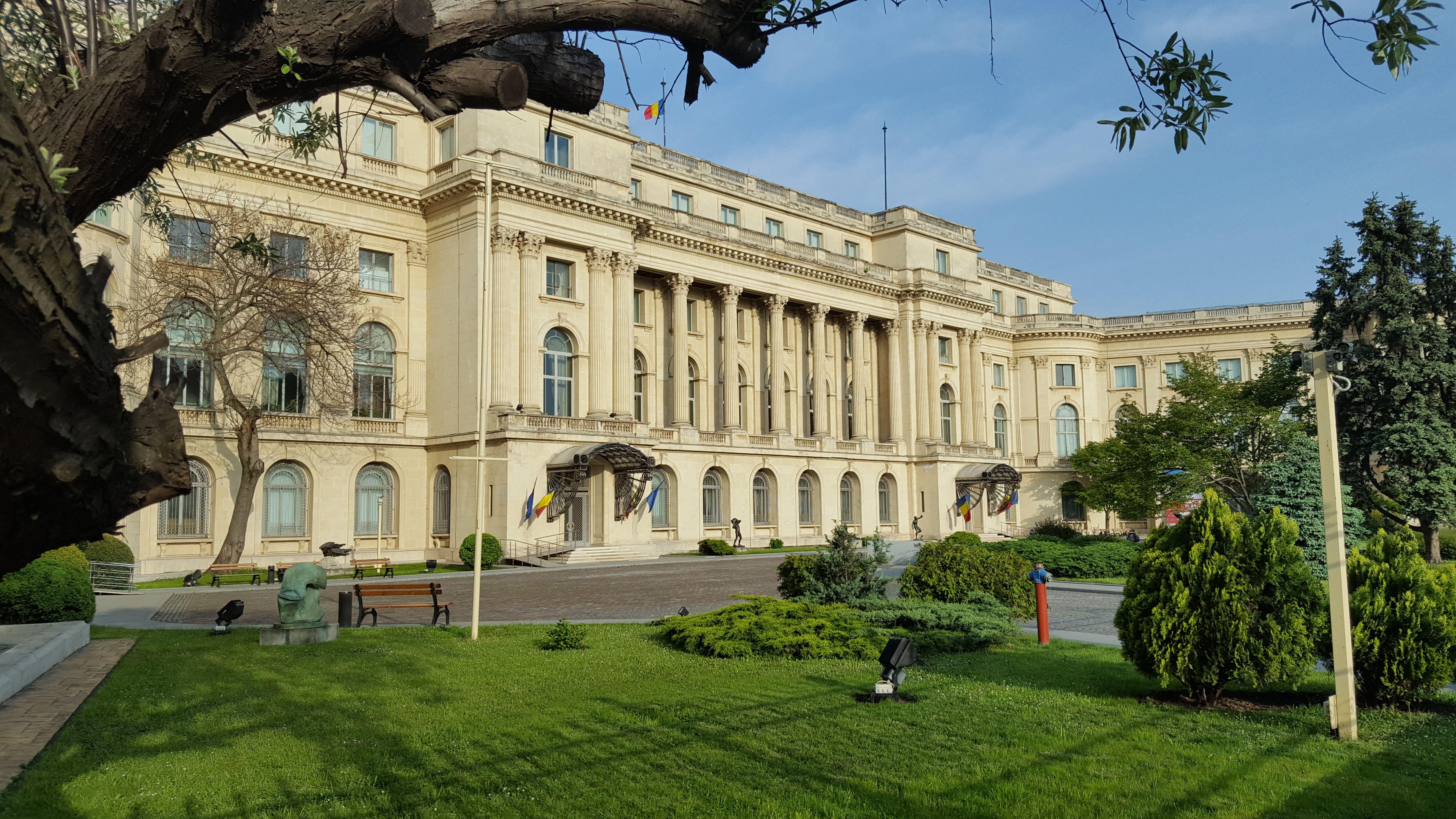
10. The former Royal Palace in Bucharest
The Royal Palace of Bucharest was the primary royal residence until King Michael was forced to abdicate by the communist regime that came to power in 1947.
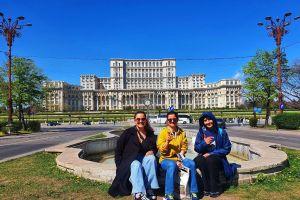
Communist Walking Tour: History, Megalomania & Hidden Sights
Start from: Revolution Square next to the Rebirth Memorial (The patatoe)
Starting in 1953 the Royal Palace hosts the Romanian Art Museum and does so even today. However, since the communists took up office in most of the grand buildings in Bucharest, the palace also was set on fire during the Romanian Revolution.
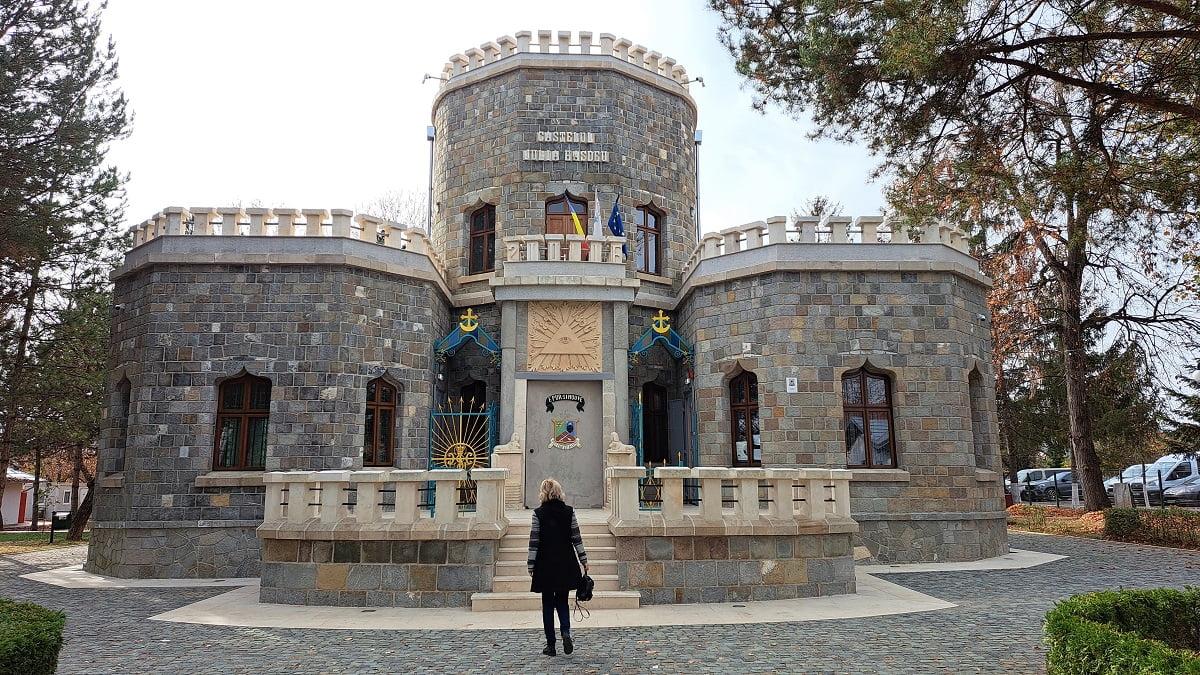
11. Iulia Hasdeu Castle - Museum of Spiritism
If you’re drawn to Romania for ghost stories about the Bran and Transylvania region, don’t miss Iulia Hasdeu Castle in Câmpina, just 80 km from Bucharest. It’s an ideal stop on a day trip to Peles Castle, Cantacuzino Castle, Brasov, or Bran Castle.
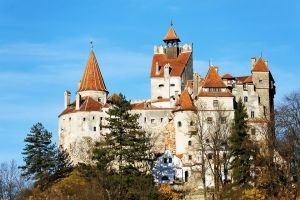
Private Day Trip to Brasov, Bran Castle and Peles Castle [NO Dracula stuff]
Start from: Bucharest
Iulia Hasdeu, the brilliant daughter of nobleman and writer B.P. Hasdeu, tragically died of tuberculosis just before turning 19 in 1888. Consumed by grief, her beloved father began building the castle in 1893 as a miniature medieval fairytale home, where he held spiritism sessions to communicate with her.
Locals report strange occurrences, and many still avoid passing by this miniature castle (originally a folly house), adding to its eerie reputation.
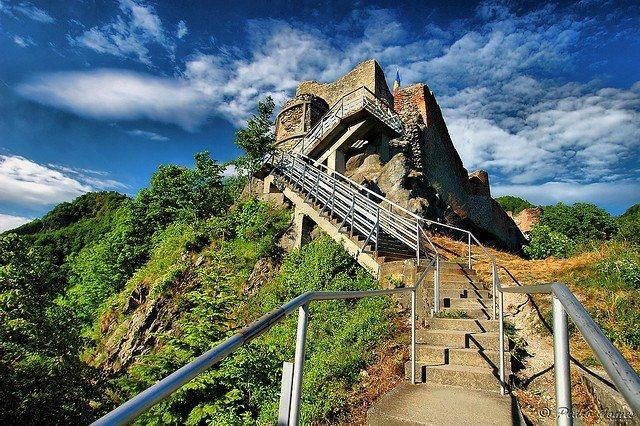
12. Poenari Castle, the real home of Vlad Dracula
To uncover the real Vlad Tepes, head to Poenari Castle, his secondary residence in Argeș County near Arefu. The 14th-century fortress, perched 800 meters above the valley, is reached by climbing 1,480 steps, a challenge that highlights its once-impenetrable design.
Unlike Bran Castle, which Vlad never visited, Poenari offered a strategic vantage point, making it his fortress of choice. Located near the Transfăgărășan Highway and Bâlea Lake, this remarkable castle is a perfect stop on a day trip along the world’s most scenic road.
13. The largest fortified church in Romania: Biertan Church
Biertan Fortified Church, though not a castle, is a must-see in Romania and a key tourist attraction among Transylvania’s 160 fortified churches. Built in the late 15th century by Transylvanian Saxons, it features stunning late Gothic architecture.
A unique feature of Biertan is its divorce cell, where couples seeking separation were locked together for two weeks with just one cup, plate, and spoon to share. Only one couple ever divorced after this!
Another notable fortified church to visit is the Viscri Fortified Church.
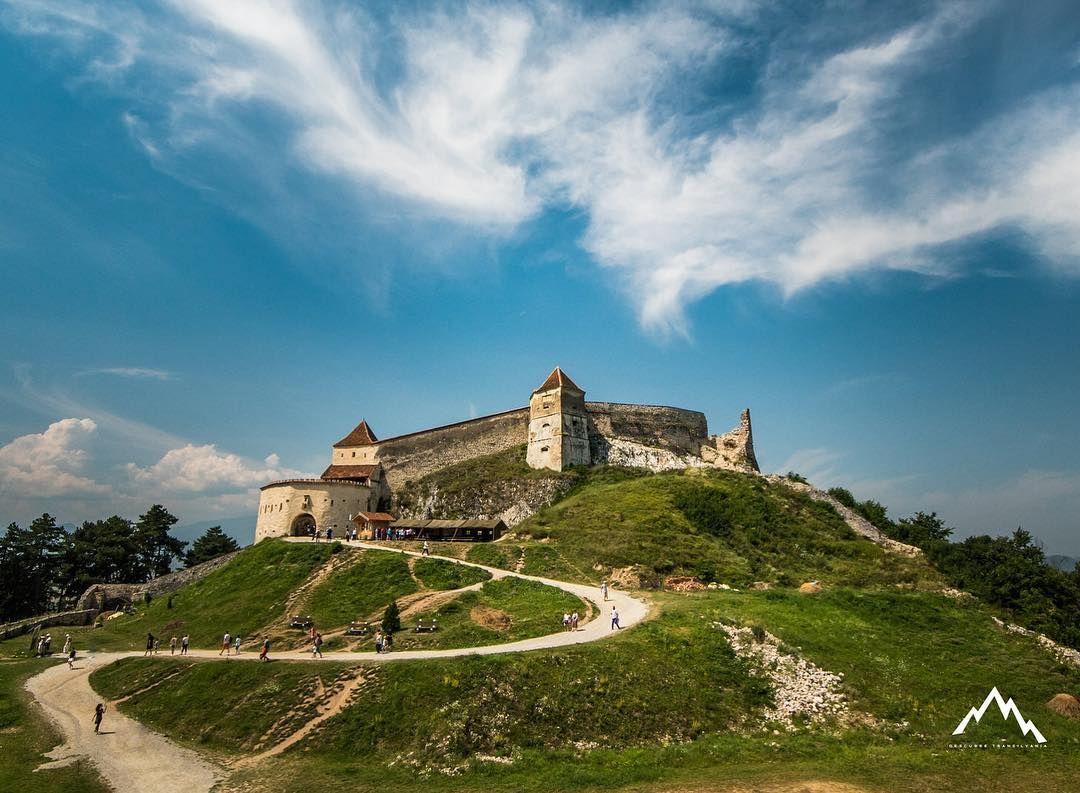
14. The citadel on the hill: Rasnov Citadel
The Rasnov Citadel is closest to Brasov and very easy to get to. It was first mentioned in the 14th century, and the Teuton knights built it to protect the Saxon population in the area from the Tatar attacks.
The position, perched up the hill, overlooking the land, is advantageous. Rasnov fortress would control access to Transylvania, giving it considerable strategic importance. Like any other good medieval fortress, Rasnov Castle did a fine job protecting the people who took refuge inside during attacks, as it was pretty impenetrable.
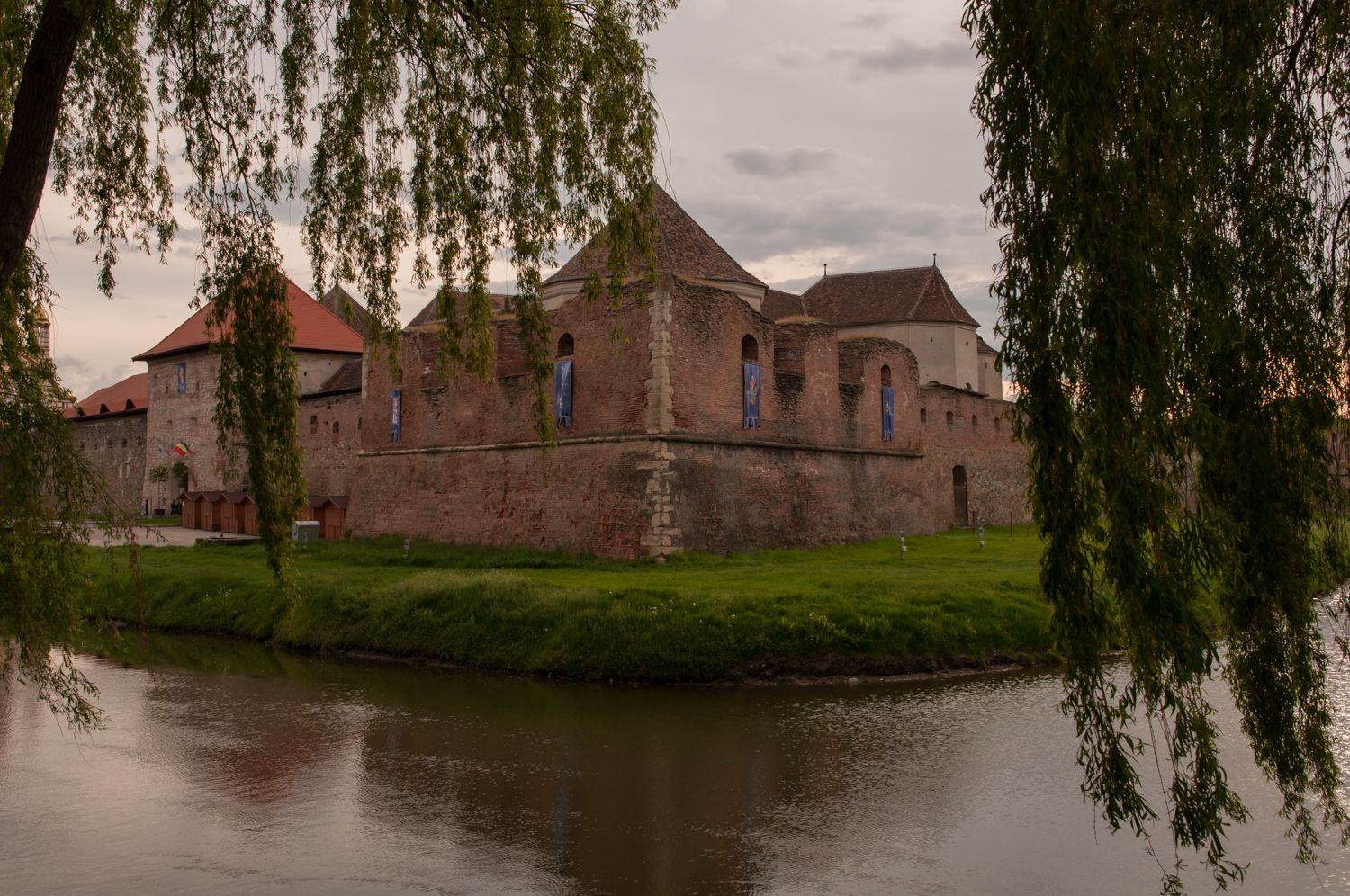
15. The impressive Fagaras Fortress
Făgăraș Fortress, located on the road between Sibiu and Brașov, is perfect for a day trip. Dating back to the 17th century, it served as a residence for noblemen and princes but later became a notorious communist prison.
Used to punish anti-communist fighters, the fortress housed brutal torture chambers, including a medieval Iron Maiden, now on display. Visitors can also see an impressive collection of Roman artifacts, medieval weapons, and traditional folk crafts.
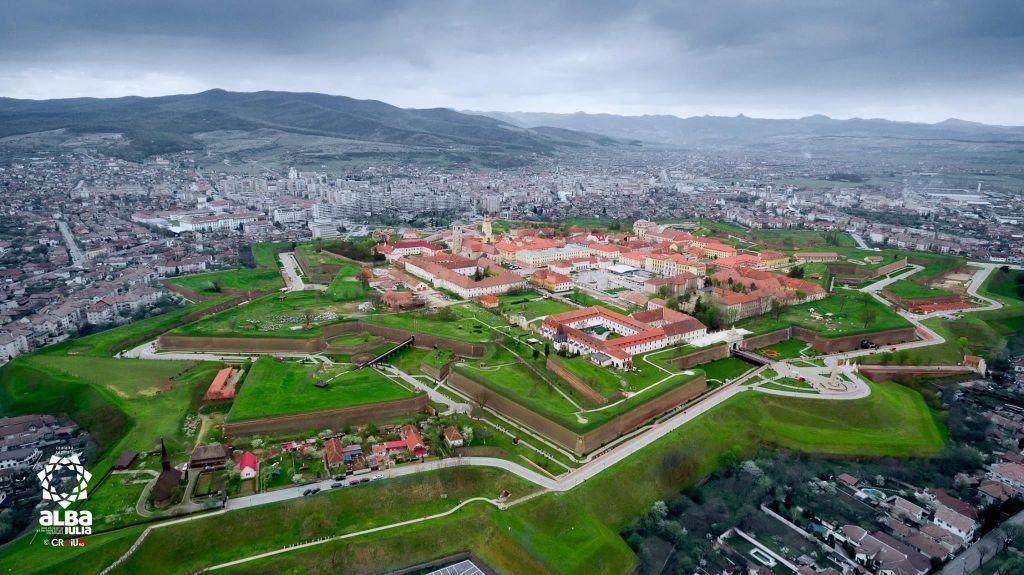
***
So there you have it - a taste of the best castles in Romania!
Which one do you want to put first on your list when visiting Romania?
Let me know if you need any help with planning your trip - that's what we're here for!
Your Romanian Friend,
Marius
